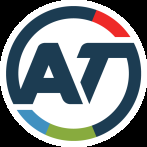

20 Viaduct Harbour Avenue Auckland 1010
Private Bag 92250, Auckland 1142, New Zealand
Ph 09 355 3553
Fax 09 355 3550
8 November 2022
J Turner
[FYI request #20744 email]
Kia ora J Turner,
The information you requested - CAS-631323-V8H5V5
I refer to your LGOIMA request dated 04 October 2022 relating to the track closures announced 3
October 2022.
I will answer your questions in the order that you have asked them.
Any memo, emails, or discussion about the timing of the announcement and the failure to engage
with elected members prior to announcing the closure
Please see the attached email communication and documentation in the link below– relevant
documents are in Q1.
CAS-631323-V8H5V5 J Turner V3 Final.zip
Any plans to improve the bus service, including temporary bus lanes, additional service
Auckland One Rail (AOR) has explored all options to assist AT in mitigating the shortage of bus
drivers to support the oncoming Rail Network Rebuild (RNR) previously known as RNGIM closures
and the transport of our passengers:
This is a response to our conversation earlier this week, regarding AOR to review of the current
KiwiRail RNR documentation focusing on potential opportunities for AOR/AT to run single line, peak
direction services, whilst addressing key safety concerns:
1. KiwiRail has undertaken a risk assessment of the activities. The risk assessment concluded that to
run EMUs under an electrified line is an unacceptable risk while construction activities ensue –
AOR confirm this is an unacceptable risk. This is a key determining factor. However, the (electric
Multiple Units (EMU’s) are obviously our preferred option.
2. To stop the construction during these electrified periods would add approximately 50 percent to
the program time and budget of the RNR project.
AOR have subsequently explored the use of Diesel Multiple Units (DMU), with the following initial
concerns:
Under the Railways Act 2005, and Health and Safety and Work Act 2015 there is the principle
guidance of SFAIRP (So Far As Is Reasonably Practicable). It is not possible to argue “less safe”. in
aucklandtransport.govt.nz


this instance. The use of the DMU is less safe compared to the Electric Multiple Unit (EMU) for the
following reasons:
1. The DMU (less safety controls than an EMU) are being placed in a more hazardous
environment (construction), than an Electric Multiple Unit (EMU) in a non-construction
environment.
2. Platform Train Interface (PTI) –The use of DMUs wil result in PTI concerns. The DMU has an
average 200mm step height at each platform. The triangulation of vertical and horizontal step
distances is a distinct increased risk and a reduction of SFAIRP. This will impact mobility
impaired customers and potentially result to high number trips and falls
3. Door Controls –Due to the limited door interlocking increasing the risk of wrong side door
opening.
4. SPAD – There is the risk of a higher consequential outcome of a SPAD via the use of DMU
compared to EMU. Reason being there is no ETCS in the DMUs.
5. Competency – There are only 4 Locomotive Engineers in AOR qualified to operate a DMU on
the Western and Southern Lines. None of these are full time drivers, and work as part of
management. There would be significant resources required to ensure competency of
sufficient Locomotive Engineers.
6. Reputation –
a. Passenger Impact - The DMU are not “as” comfortable for passengers. They are older,
they are noisier. They represent less passenger comfort.
b. Community/ Business Owner Impact – More so using DMU through developed areas wil
result in complaints from Communities/Business owners, particularly on start-up.
c. Environment – DMU emissions may not be acceptable to the communities, and wil be, for
the period, not in accordance with the AT environmental and sustainability visions.
7. Asset Reliability - It is empirically shown that the DMU do not have the same RAM values as
the EMU.
8. The availability of sufficient spares to ensure on time running would need to be researched.
9. Contractual – Several contractual interfaces have been deleted. These would be either need
to be renewed or alternative contracts for asset maintenance sourced. Again, significant
resources would need to be invested.
10. Certification of the DMU units.
As a result of the above points, there is an increase to the inherent risk profile of AOR
relative to both the safety and commercial aspects of the Franchise Agreement. If AT directs
AOR to explore these options further, then AOR would require a detailed request for
proposal, based on the scale and magnitude of the operational change.



AOR would also require indemnification on all safety, legal, contractual, and reputational clauses
relating to the existing Franchise Agreement for the period of these services, and for these services
only.
Any cost/benefit analysis, or other analysis, done regarding the decision to close the line to
passengers completely, opposed to opening it in the morning and evening
Auckland Transport (AT) are looking at adding temporary bus lanes to the network to speed up rail
replacement and scheduled bus services that are impacted by the Rail Network Rebuild disruption.
We will be adding in rail bus services on Manukau Road and Great South Road to ensure that we are
able to transport customers in phase 1 of the disruption when the southern train line between
Newmarket and Penrose and the Onehunga train line is impacted.
Please refer to Q3 in the link above for supporting documentation.
Any memos or other information as to why the foundation work was not done prior to relaying the
tracks and sleepers.
This question is declined under Section 17 (g) (ii) of the Local Government Official Information Act as
the information is held by another local authority. We have transferred this to KiwiRail for their
response.
Any plans, memos, internal discussions from Auckland Transport to improve Active Transport
safety along these routes, including the provision of bike racks on buses.
Please refer to Q5 in the link above for documentation.
Some information within the provided documentation has been withheld under:
− Section 7(2)(a) of the LGOIMA, to protect the privacy of natural persons, including that of deceased
natural persons.
− Section 7(2)(b) (ii) of the LGOIMA, would be likely unreasonably to prejudice the commercial
position of the person who supplied or who is the subject of the information.
− Section 7(2)(f) of the Act, as the free and frank expressions of opinion {being necessary for the
effective conduct of public affairs) would be inhibited by the release of such emails and the need to
withhold that information to protect that interest does not appear to be outweighed by other
considerations which render it desirable, in the public interest, to make that information available.
Should you believe that we have not responded appropriately to your request, you are able to make
a complaint to the Office of the Ombudsman in accordance with section 27(3) of the LGOIMA and
seek an investigation and review in regard to this matter.
Yours sincerely
Darek Koper
Group Manager Metro Services.






